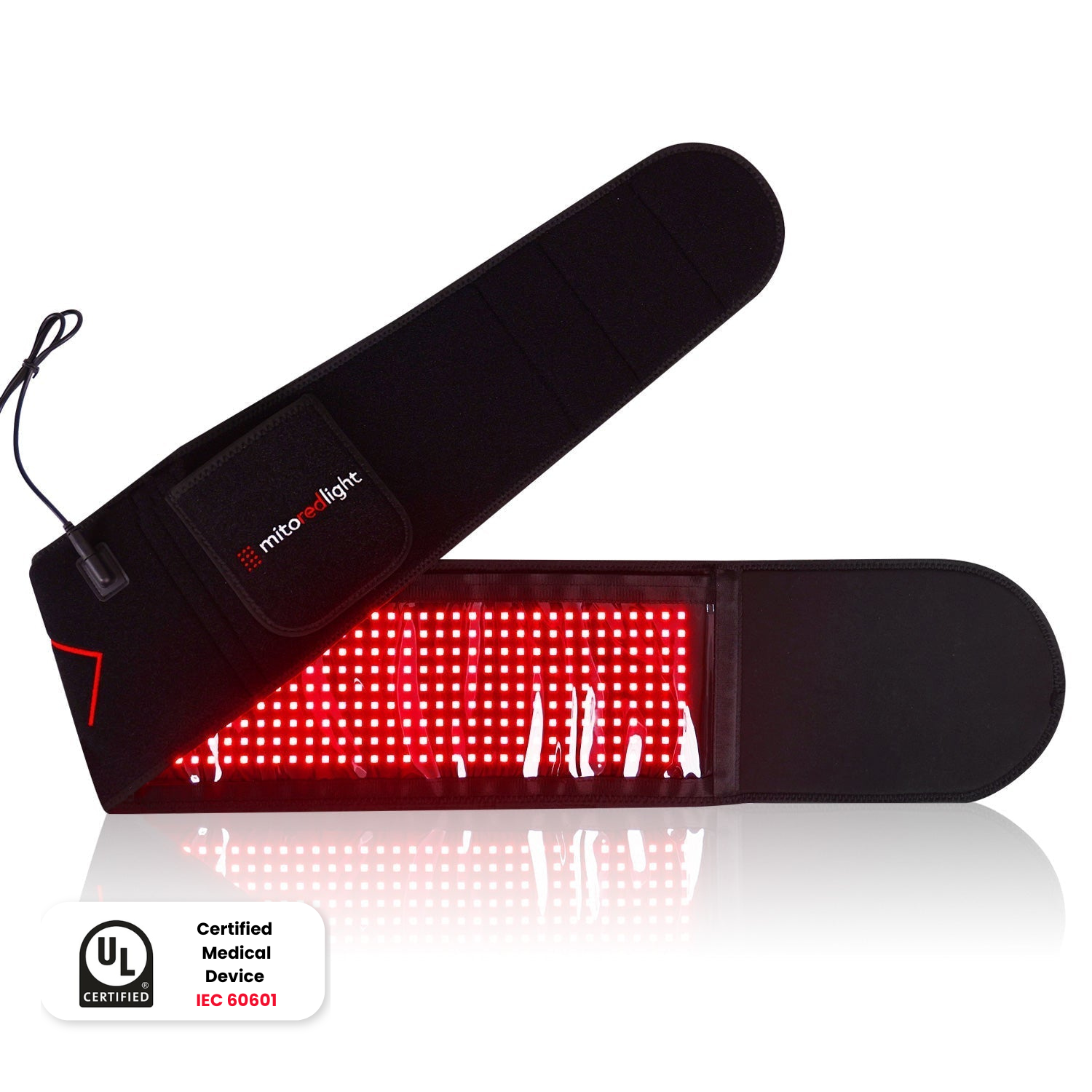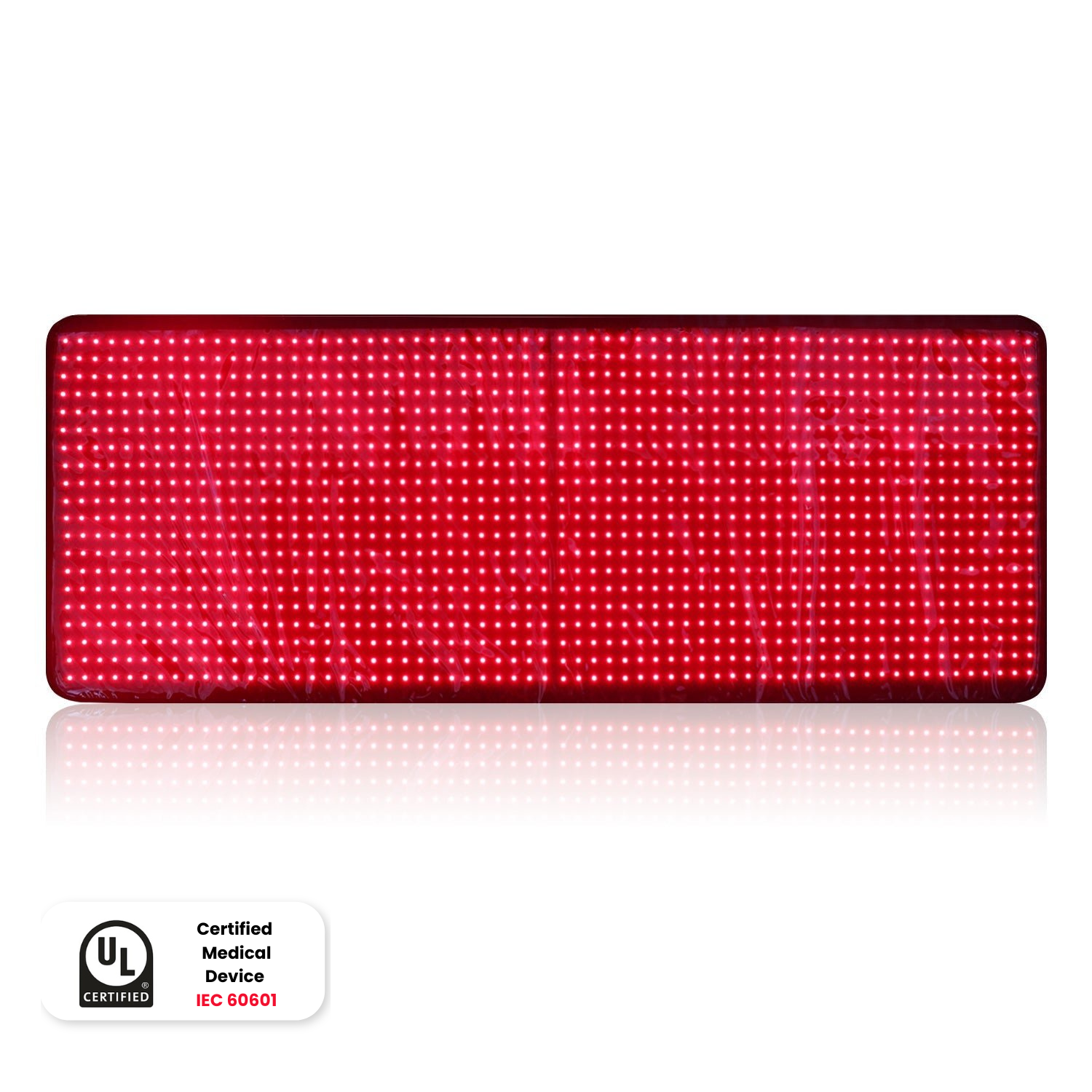DISCLAIMER: Mito Red Light devices are Class II wellness devices aimed at affecting the body through topical heating and supporting cellular function. The information provided in this article and on this site is for educational purposes only and is not intended to imply effectiveness of Mito Red Light devices for any specific application. The information provided in this article and on this site is not intended to diagnose, treat, cure, or prevent any disease, is not a substitute for consultation with a licensed medical provider and should not be construed as medical advice. Click here to read our article on potential contraindications of red light therapy..
Medically Reviewed by | Heidi Wright, BSN, RN, PCCN
Once you hop on the red light therapy train and start enjoying the benefits, you might find yourself counting down the hours until your next session, or attempting to sneak a session in sooner. If you’re wondering if you’re on the fast track to overdoing it, we can help calm your fears.
That said, there are some caveats to red light therapy usage that you should understand. We’ll explain them, and also give you an overview of how red light therapy works and what it does.
What Is Red Light Therapy?
Light therapy, also known as photobiomodulation, is a non-invasive way to address numerous medical and non-medical conditions. Light therapy is used for:
- Pain management
- Workout recovery
- Body restoration and rejuvenation
- Skin conditions (like anti-aging)
- Sleep improvement
- Hair growth
- Better mental agility
Different wavelengths of light can offer different benefits, and not all wavelengths are beneficial. For instance, blue light, which is emitted from the sun but also from devices like tablets, smartphones, and computers, can interfere with sleep and lead to eye strain. UV light, while somewhat beneficial, offers detrimental health impacts like skin damage.
How Does Red Light Therapy Work?
Red light therapy works by targeting your cells with specific wavelengths of light. These wavelengths penetrate into deep layers of tissues and stimulate the cells that make them up. Specifically, RLT interacts with the mitochondria in our cells. The mitochondria produce cellular energy called ATP.
The process through which mitochondria create energy is complex, but red light is specifically absorbed by a molecule known as cytochrome C oxidase, which is integral in helping mitochondria make ATP more efficiently. By activating this molecule, RLT can support the mitochondria in our cells, causing them to make cellular energy faster.
What Does Red Light Therapy Do?
The benefits of RLT and NIR light therapy are numerous. From skin to hair and virtually every body part and tissue from your head to your toes, RLT helps improve, restore, and support your well-being.
For Skin and Hair
Both skin and hair benefit from RLT.
Skin suffers collagen and elastin loss as early as age 20, leaving skin with less resilience and showing signs of age like fine lines and deep-set wrinkles. In addition, many adults begin to experience hair loss as part of the aging process.
RLT targets both skin and hair, stimulating cell turnover and targeting fibroblasts in the skin which are responsible for the creation of collagen.
The results? RLT has been associated with healthy hair growth and proper collagen production in the skin.
For Sleep
Sleep evades many of us, whether it’s due to improper sleep habits, shift work, or stress that keeps us awake at night. Regardless of the reason we are missing sleep, research tells us that light affects our wake and sleep cycles.
Our circadian rhythm, for instance, operates on light. Daylight turns off the mechanisms that cause us to sleep, and twilight induces the production of hormones that initiate sleep. Some forms of light, like blue light, can interfere with your circadian rhythm and make it harder for you to get the rest you need.
Red light, however, is associated with deeper sleep and better sleep quality. Using RLT before bed instead of scrolling on your smartphone can lead to more restful nights.
For Athletic Performance
It’s no secret that most of us begin to notice a steady decline in our athletic performance over time. One reason is that it takes our muscles and joints longer to recover from workouts, especially if they are particularly strenuous.
RLT exposure has been used by athletes to help initiate recovery after games and events for years. By targeting deep tissues and improving blood flow, you can fast-track your workout recovery and get in more sets sooner, which could lead to improved endurance and more muscular gains.
For Pain and Soreness
Sore joints and aching muscles may have you hitting the NSAID pain relievers more than you’d like to, and those solutions only provide temporary relief. RLT can penetrate the skin and ease feelings of muscle soreness and joint pain at the source while supporting circulation and blood flow to these areas.
These benefits are likely the tip of the iceberg as we learn more about RLT and what it means in terms of long-term health benefits.
How Often Should You Use Red Light Therapy?
While side effects from using red light therapy are quite rare there’s most experts recommend use in the range of 5-30 minutes per day. More is not always better! This is known as the biphasic dose response, with research showing that lower usage may actually be more beneficial than “overuse.”
Even though reported side effects are rare, there is always a potential risk for skin irritation if you’re using a device (like an LED mask or helmet) that directly touches the skin.
Red light therapy (RLT) and near infrared (NIR) light therapy are generally considered safe for the eyes, and moderate amounts have been shown to be beneficial in some studies. That said, the lights can be bright, and some people may have photosensitivity. Due to light sensitivity, we recommend using protective eyewear when you use RLT therapy.
Depending on the body part that you are treating, you may need more or less time with the RLT device you are using. When you’re ready to shop for a device, you should know what features are most important.
How To Shop for RLT Devices
Some RLT devices over-promise and under-deliver. This is because they don’t contain many light emitting diodes per square inch and leave empty space that doesn’t treat anything. Be on the lookout for devices (like panels, belts, and masks) that, while large in size, don’t offer many LED lights.
Additionally, it’s important to make sure that your RLT device covers as many wavelengths of light as possible. Red light wavelengths measure between 600 nm and 700 nm and are capable of interacting with the skin. These wavelengths, however, will not penetrate the skin to reach the muscle.
For muscle and joint wellness, you need NIR light, which has measurable wavelengths between 800 nm and 900 nm. If it seems overwhelming, you can make shopping a breeze by checking out the product offerings at Mito Red Light.
Why Mito Red Light?
You’ve got plenty of options for red light therapy at home, which is why we created products that stand apart from our competitors.
Our Lights
Our panels, helmets, and flexible, wearable devices all contain more diodes per square inch than our competitors, so you never have to worry about wasted space or the “polka dot” effect. Some of our more advanced products contain LEDs with three separate diodes which emit three different wavelengths of light at once.
Our Testing
We third-party test our products so that the data we claim on our website can be trusted as accurate. Our products all produce RLT wavelengths that are within the therapeutic window of treatment as defined by scientific testing and research.
Accessibility
We offer the widest selection of red light therapy devices in sizes and configurations that can fit any space, need, and budget. Our wearable devices allow you to experience RLT while remaining hands-free and giving you the ability to move freely.
Advanced Technology
Our devices are specially formatted with Enhanced Spectral Energy Output™, a technology that delivers energy across wide parts of the spectrums of red and NIR light. It’s a technology used specifically by Mito Red Light to ensure you get the most from every product we offer.
Combined with our risk-free 60-day trial and superior customer service, Mito Red Light is ahead of the competition and offers the best value for your money.
Turn on the Red Light
RLT is valuable, non-invasive, and beneficial. You can treat your entire body as frequently as daily, for about 20-30 minutes per day. You can’t overdo RLT or use too much, but there’s also no evidence that using it more frequently will be any more beneficial to you.
At Mito Red Light, our products are designed to give you the benefits you want in a time frame that is convenient to you. You get the most powerful RLT and NIR light therapy available and can rest assured that your time in front of our products is never wasted.
Sources:
Transcranial near-infrared light in treatment of neurodegenerative diseases | Frontiersin.org
Low-level laser (light) therapy (LLLT) in skin: stimulating, healing, restoring | PMC
Light exposure behaviors predict mood, memory and sleep quality | Scientific Reports
Red Light Therapy: How Often Should You Get Red Light Therapy | Prevention.com






























